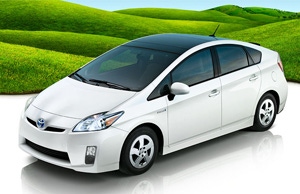New OICA President Has Tough Words for U.S. Auto IndustryNew OICA President Has Tough Words for U.S. Auto Industry
As head of the global body making the industry’s case to the U.N., Patrick Blain regrets that U.S. auto makers continue to resist adopting international vehicle regulations, especially regarding emissions reduction.
November 2, 2011


PARIS – The new president of the International Association of Vehicle Manufacturers warns U.S. auto makers they risk being left behind in the global race for new technologies.
Patrick Blain, now six months into his new job at the OICA, says in an interview here that European and Asian car companies are setting the pace and working together with their governments to effectively tackle issues of emissions and rising fuel costs.
As head of the global body making the industry’s case to the United Nations, he regrets that U.S. auto makers continue to resist adopting U.N.-based international vehicle regulations, especially regarding emissions reduction.
However, Blain welcomes July’s historic agreement on corporate average fuel economy standards between Washington and the domestic and foreign-based auto makers in the U.S., which he sees as a major step in the right direction.
“At last, they are entering into the natural discussion,” he says of the OEMs. “Fighting like hell against technical regulations that make some sense to save the planet is a mistake. I think they have been fighting for too long, and they have been paying the price.”
With consumers increasingly aware of low-emissions vehicles and high fuel prices at the pump, American manufacturers are not ready to supply cars that meet their needs, while their Japanese and European competitors are, he says.
Much of this comes down to the ability of Asian and European governments to provide their domestic industry sufficient financial backing in the critical research and development and early product-rollout stages.
Some observers argue Toyota’s global dominance in the hybrid market owes a great deal to the Japanese government’s strong and consistent support for R&D. And in Europe, particularly in France, state subsidies for electric-vehicle technology has grown dramatically in recent years.

Toyota hybrid-vehicle leader due in part to government support.
By contrast, U.S. auto makers, until recently, did not seek a helping hand from Washington.
“If the American manufacturers had gone years ago to the government and said, ‘Listen, we have a huge project’ – electric cars, for instance, the government could at least have studied it. But they never tried,” says Blain, who also is president of France’s council for the administration of the committee on the manufacture of French automobiles.
“Take the Chevrolet Volt (extended-range electric vehicle launched in 2010),” he says. “Without government help, at least in the developmental stages in which certain economies of scale must be reached, it is too expensive. It’s just another example of the American industry being too late. They have missed many trends.”
This could put U.S. auto makers behind emerging markets as well. In Blain’s view, the Chinese government’s current policy of investing billions in EV development, with plans to have 1 million EVs on the roads by 2015, represents an “incredible double jump” in terms of normal market development.
A typical Chinese potential buyer could go to having never owned a car to owning a state-of-the art vehicle designed for short-distance driving on severely clogged highways.
Blain reckons many future innovations will involve breakthroughs in electrical-system technologies. “This has already happened with drive-by-wire, for example,” he says. “There are already energy-(recovery) systems on the market, such as Renault has just launched on the Laguna. Most hybrids already have this.”
Other game-changers likely would involve technology related to fuel economy.
“There is still so much room for improvement in standard and diesel engines, perhaps by as much as 20%,” Blain says. “Obviously, reducing vehicle weight and tire resistance could also help a lot, possibly increasing fuel efficiency by up to 10%.
“I hope this time the U.S. manufacturers will be onboard the train. They probably will, having learned, hopefully, the lessons of the past.”
Blain is optimistic about the global auto makers’ greater acceptance to harmonize international technical standards. The big hope here would be the growing emerging-market manufacturing hubs that will be looking for export markets.
“More and more, there is a need to think strategically in terms of export, for instance, by China or India to Europe,” he says. “Nissan is already exporting the Micra from India to Europe.”
The auto maker moved the European city car’s production from its Sunderland plant in the U.K. to lower-cost Chennai, India, last year.
“Twenty years ago, you had mature markets fighting with new markets to accept the same standards because that was easier for them, with new markets fighting to protect themselves,” Blain says. “Now, it is more equilibrated. The world is now becoming truly global, so there is a common interest to have common standards.”
Still, he admits, seeing the wholesale formal adoption of international standards, such as those drafted by the U.N. Economic Commission for Europe and which are invariably written into European Union laws, is a long way off.
“Realistically, it’s hard to see,” Blain says, especially in the face of domestic priorities and political and economic considerations.
Read more about:
2011About the Author
You May Also Like